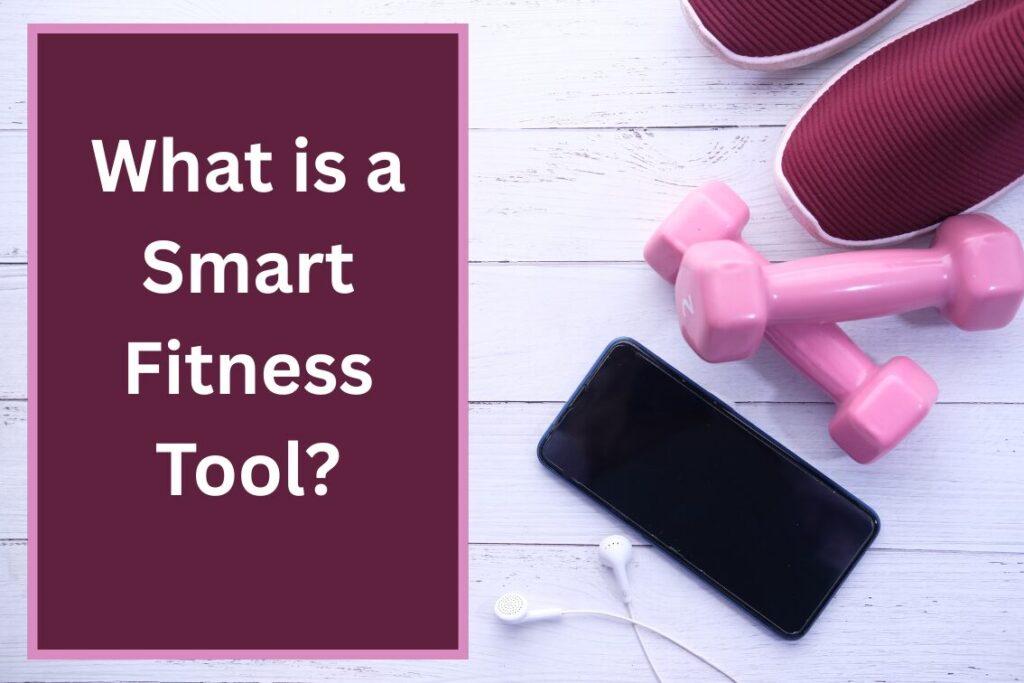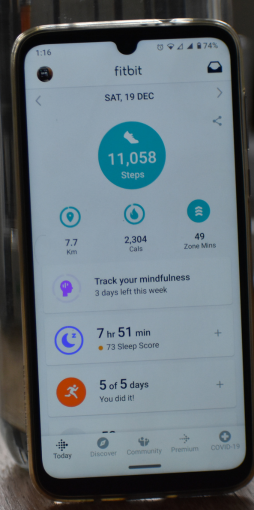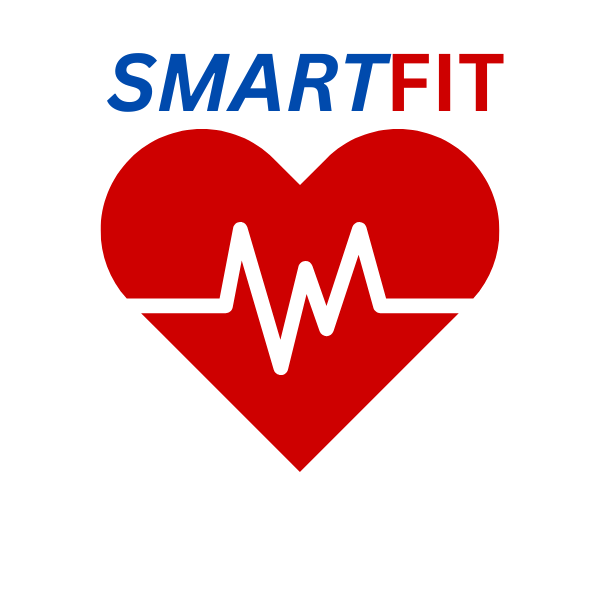*This post may contain affiliate links for which I earn commissions.*
Millions worldwide wear a high-tech smart fitness device to track daily steps, heartbeats, and sleep habits. Whether you are an athlete training for peak performance or a homemaker trying to stay active and healthy, a smart watch or another tracking device will help you stay on track with your health goals.
This trend in the tech fitness industry began with counting steps and heartbeats, and now provides real-time insights into your body mechanics for optimum performance.
Have you wondered how these devices work and what information they collect? How reliable is the feedback? Is your data secure? Together, we will explore these devices, the technologies behind them, and what all those numbers on your wrist mean for your overall wellness and longevity.
What is a Smart Fitness Device?
Smart fitness devices are technology products designed to monitor and record physical activity and your body’s reaction to movement. These wearable models include fitness trackers, smartwatches, heart rate monitors, and even “smart” rings. Popular brand names include the Fitbit Charge, Apple Watch, Garmin Forerunner, WHOOP Strap, and Oura Ring. Manufacturers such as Peloton, OxeFit, Body Pod, and many others make gym equipment and scales that augment our wrist activity trackers. There are so many choices, and the decision is very personal.

While each device may offer different features, they share a common purpose: to provide real-time data about your body and how activity performance affects your body’s response. These devices have built-in sensors that track movement, heart rate, sleep patterns, and more. This data is then processed by built-in algorithms or synced with third-party apps to offer personalized insights.
The Basic Health Metrics
Smart fitness devices monitor various health indicators and reveal your physical condition and daily habits. The feedback and encouragement you receive can help create better, more consistent habits and fitness improvements. Here’s a breakdown of the most common and valuable metrics these devices track:
Heart Rate Monitoring
Most fitness devices use photoplethysmography (PPG) to measure changes in heart rate. The sensor will shine a light onto your skin to detect blood flow changes based on how the light is absorbed or reflected. These sensors track your heart rate continuously throughout the day or during specific workouts. Over time, you will understand your resting heart rate, training intensity, and recovery.
Steps and Movement

A smart fitness device can detect movement and orientation using accelerometers and gyroscopes to count steps and physical activities. These sensors can differentiate between walking, running, cycling, or climbing stairs. Some advanced models can determine movement types and estimate distance traveled and calories burned.
Sleep Tracking
A common feature is monitoring sleep duration and quality by combining heart rate data with movement sensors. Some devices can estimate sleep stages—light, deep, and REM—by analyzing heart rate and motion during the night. Understanding these sleep patterns can help you understand and improve your sleep environment.
Estimated Calorie Burn
Calories burned are estimated based on a combination of heart rate, physical activity, age, gender, weight, and height. While not as precise as lab measurements, these estimates give a reasonable picture of your daily energy expenditure, which can be helpful for weight loss or designing a workout plan.
Blood Oxygen Levels (SpO₂)
Many advanced devices include SpO₂ sensors to measure the oxygen saturation in your blood. These sensors typically use red and infrared light on the underside of the device. While not intended for medical diagnosis, tracking SpO₂ can help identify potential issues with breathing, altitude acclimation, or infections.
Electrocardiogram (ECG/EKG) Functionality
Some smartwatches, such as the Apple Watch and Fitbit Sense, offer ECG features that record the electrical activity of your heart. These features can detect irregular heart rhythms, like atrial fibrillation (AFib). While this does not replace a clinical ECG/EKG, it can provide an early alert to potentially serious heart conditions.
Stress Monitoring
Stress tracking usually relies on Heart Rate Variability (HRV)—the variation in time between heartbeats. A lower HRV may indicate higher stress levels. Devices may also use skin temperature and breathing patterns to estimate mental or physical stress.
Respiratory Rate
Respiratory rate, or the number of breaths per minute, can be tracked using subtle changes in heart rate and body motion. This is especially useful during sleep monitoring or recovery tracking, as changes in respiratory rate can signal fatigue, illness, or stress.
How Devices Collect and Process Data
Every smart fitness device relies on hardware sensors and software algorithms to monitor and interpret your health data. Though they may look simple, these devices are packed with sophisticated technology working behind the scenes.
Sensors and Their Technology
As we’ve already noted, at the core of every fitness device is a set of sensors designed to capture different types of physiological and movement data:
- Optical Sensors (PPG) monitor heart rate and SpO₂ levels. They detect changes in blood volume by shining light into the skin and measuring its reflections.
- Accelerometers & Gyroscopes sense movement, orientation, and acceleration to count steps, track activity, and recognize motion patterns.
- Electrical Sensors (ECG) are used in devices with ECG capability to detect the heart’s electrical signals.
- Thermometers & Skin Temperature Sensors monitor changes in skin temperature, which can be used to assess stress or recovery.
- Bioimpedance Sensors track respiration rate or hydration levels.
On-Device Algorithms and AI
The raw data collected is meaningless without advanced algorithms to interpret it. Fitness devices use built-in processors and machine learning models to deliver real-time information like heart rate and blood oxygen. Their algorithms run efficiently on limited hardware and do not drain the battery life.
Comprehensive calculations require more resources and are available only when syncing your data to cloud analysis servers.
Data Syncing and Cloud Analysis
Most devices are paired with a smartphone or a computer. The manufacturer’s hosting site receives your data via the internet, and a robust analysis, a health profile, and a history are built.
Some platforms offer integration with other health apps or services, allowing for a more complete picture of your wellness, including diet, mental health, and medical records.
This seamless blend of sensors, software, and cloud services makes smart fitness devices powerful tools for tracking and improving health, without requiring much effort from you.
Device Accuracy and Limitations
Smart fitness devices are convenient and offer an insightful look into your lifestyle. It’s important to understand that their data isn’t always 100% accurate. These devices are designed primarily for consumer wellness tracking, not clinical diagnostics, and their accuracy can vary based on several factors.
a. Not Medical-Grade Devices
Most fitness wearables are not regulated medical devices, meaning they don’t meet the strict standards required for hospital-grade equipment. For example, heart rate readings may lag slightly during intense activity, and sleep stage estimations are based on algorithms rather than brainwave measurements (which are used in clinical sleep studies).
Some devices—like the Apple Watch or Fitbit Sense—have received FDA clearance for specific features (such as ECG and AFib detection). Still, these are limited in scope and intended to prompt further medical evaluation rather than deliver a diagnosis.
b. Factors That Affect Accuracy
Several external and personal factors can impact how accurately a fitness device reads your data:
- Skin Tone and Tattoos: Darker skin tones or tattoos can interfere with optical sensors, especially those used for heart rate and SpO₂ tracking.
- Device Fit and Placement: A loose strap or wearing the device too high or too low on your wrist can cause inconsistent readings.
- Movement Artifacts: Intense or erratic movement during workouts may introduce noise that skews sensor data.
- Lighting and Temperature: Cold weather can reduce blood flow near the skin, affecting heart rate readings; bright light can affect sensor performance in some devices.
c. Importance of Trends Over Single Readings
Although one-off readings may be imperfect, smart fitness devices are very good at tracking trends over time. For example, while your calorie count may be off by a few percent on any given day, the long-term trend of increasing or decreasing activity is usually reliable.
Using the data to understand general patterns—like how well you sleep over a week or how your resting heart rate changes with fitness level—can be far more valuable than obsessing over moment-to-moment precision.
d. Cross-Referencing With Other Tools
For users who need more precision, it’s a good idea to cross-reference data with other tools:
- Use a chest strap for a more accurate heart rate during exercise.
- Compare step counts from different devices.
- Consult a healthcare provider if your device flags a possible issue.
In short, while smart fitness devices are handy for day-to-day health awareness, they should be viewed as support tools, not replacements for professional medical equipment or advice.
Privacy and Data Security
With smart fitness devices constantly collecting sensitive health data, such as heart rate, sleep habits, and even potential signs of illness, privacy and data security become crucial considerations. Understanding how your information is handled can help you make informed decisions about which device to use and how to use it safely.
a. What Data Is Collected?
Smart fitness devices collect a wide range of personal health and lifestyle data, including:
- Heart rate and heart rhythm patterns
- Sleep cycles and duration
- Activity levels and location data (via GPS)
- Blood oxygen levels and stress indicators
- Personal information like age, weight, and gender
In many cases, this data is stored both on the device and in the cloud, accessible through companion mobile apps or web dashboards.
b. How Is Your Data Used?
Your data is typically used for the following purposes:
- Providing personalized insights and health recommendations
- Syncing across devices and platforms (e.g., syncing with Apple Health or Google Fit)
- Improving device algorithms through aggregated, anonymized data
- In some cases, supporting third-party research or marketing efforts (with user consent)
While most reputable companies emphasize anonymization and secure handling, it’s essential to read the privacy policy and terms of service to understand exactly how your data may be used or shared.
c. Potential Risks
Despite these precautions, no system is 100% secure. Possible risks include:
- Data Breaches: Hackers could gain access to health information stored in the cloud.
- Third-Party Sharing: Some companies may sell anonymized data to advertisers or research firms.
- Location Tracking: GPS features can reveal sensitive patterns about where you live or work.
- Cross-Platform Vulnerability: Integrations with other apps may expose your data to less secure environments.
d. How to Protect Your Information
Here are a few steps you can take to enhance your privacy and data security:
- Review Privacy Settings: Check what data you share and with whom in your device’s app settings.
- Use Strong Passwords and Two-Factor Authentication: Protect your account from unauthorized access.
- Limit Third-Party App Integrations: Only connect to services you trust.
- Stay Informed: Keep an eye on privacy updates and policy changes from your device manufacturer.
- Consider Local Data Storage: Some devices allow you to store data locally or opt out of cloud syncing entirely.
In the digital health age, privacy is part of wellness. Knowing how your data is collected, stored, and shared helps ensure that your smart fitness device is a helpful companion, not a potential risk.
What are the Benefits of Using a Smart Fitness Device
Smart fitness devices offer far more than just step counts—they provide many insights that can improve your health, guide your fitness journey, and even alert you to potential medical concerns. Here are some of the most compelling benefits of using these devices:
a. Encouragement for Healthier Habits
One of the greatest strengths of fitness wearables is their ability to motivate positive behavior change. Features like daily step goals, activity reminders, and gamified challenges help users stay engaged and consistent with physical activity. Seeing your progress in real time can create a sense of accountability and reward.
b. Personalized Health Insights
Unlike generic fitness plans, smart devices provide customized insights based on your unique data. Over time, they learn your patterns and can offer tips on improving sleep, adjusting your workout intensity, or managing stress. This personalization helps you make more informed decisions about your wellness.
c. Early Detection of Potential Health Issues
Some advanced devices can detect abnormal patterns that might signal underlying health concerns. Features like ECG monitoring, irregular heart rhythm alerts, or oxygen saturation tracking can be early warning signs. While not diagnostic, they can prompt timely medical consultations and potentially prevent severe conditions.
d. Improved Workout Performance and Recovery
Fitness wearables help athletes and casual exercisers alike optimize training and recovery. By monitoring heart rate zones, rest quality, and exertion levels, users can avoid overtraining and tailor workouts for maximum benefit. Some devices even provide recovery scores or readiness indicators to guide daily activity levels.
e. Sleep Awareness and Improvement
Many people underestimate the importance of quality sleep. Smart devices highlight sleep duration, efficiency, and stages, helping users recognize issues like insomnia or fragmented rest. Insights from this data can support better sleep hygiene and improved energy levels during the day.
f. Integrated Wellness Tracking
Modern fitness devices go beyond physical activity to support holistic health. With features like guided breathing, mindfulness reminders, menstrual cycle tracking, and hydration logs, these tools aim to support mental and emotional well-being and physical fitness.
g. Long-Term Trend Analysis
By tracking health data over weeks or months, users can identify long-term trends that might not be noticeable day-to-day. Whether seeing your resting heart rate drop with increased fitness or identifying how travel affects your sleep, trend data offers meaningful insight into your lifestyle.
In short, smart fitness devices act like personal health assistants, empowering you to take control of your wellness journey. They don’t replace doctors or professional training programs but provide the real-time feedback and motivation needed to make sustainable lifestyle improvements.
The true power of an innovative smart fitness device lies not just in the numbers it shows you, but in how you use that information to live a more mindful, active, and healthier life.

